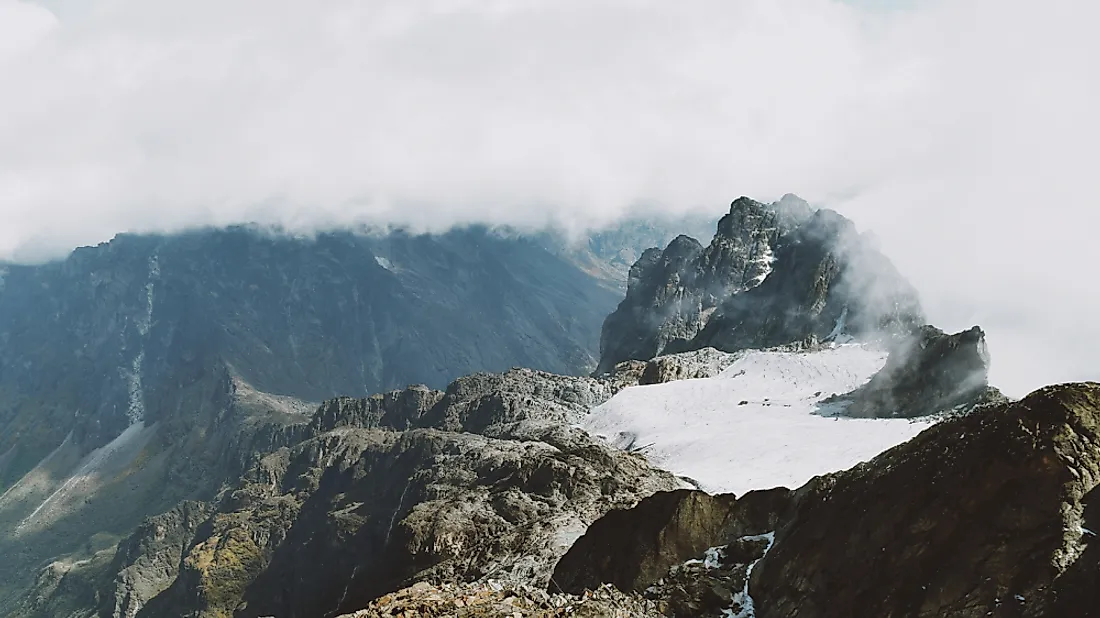Are There Glaciers in Africa?

Glaciers are made up of fallen snow that over the years condenses into large thick masses of ice. Presently, glaciers occupy 10% of the world’s total area with most lying in the Antarctica, Greenland, and the Canadian Arctic. In Africa, the distribution of glaciers is limited to three specific geographic locations: two volcanoes (Mount Kilimanjaro and Mount Kenya) and the Ruwenzori Mountains. The combined area of these three regions is approximated at 10 square kilometers. An ongoing concern is the rapid deglacierization on the three glacier fields in Africa’s glaciers as they risk extinction in the ensuing centuries due to global warming and climatic change.
3. Glaciers of the Rwenzori Mountains
The Rwenzori Mountain range sit astride equatorial east Africa at the border of Uganda and Democratic Republic of the Congo. Despite their closeness to the world’s main latitude, the equator, the Rwenzori Mountain ranges have a dense ice sheet that appears on only three mountains covering an area of about 0.5 square miles. In the early 20th century, there were 43 named glaciers spread over six mountains covering about 2.9 square miles. The number has declined to only four peaks namely Elena, Stanley, Baker, and Speke peaks, which are predominantly covered in ice all year round. It is estimated that the glaciers on Mount Speke will completely disappear in the next 40 years leaving only three glacier points on the Rwenzori. The retreat of glaciers on the Rwenzori is attributed to climate change and high temperatures, particularly in summer.
2. Glaciers of Mount Kenya
Mount Kenya is the highest mountain in Kenya and the second highest in Africa after Kilimanjaro. The mountain has eleven known glaciers found at the Nelion, Batian, and Lenana peaks. The glaciers spread over 0.27 square miles. Every year there is less new snow accumulating in winter compared to what melts in summer particularly on the Lewis Glacier, which is the largest glacier on the mountain. Mount Kenya glaciers are the source of the two largest rivers in Kenya: River Tana and Ewaso Nyiro. The rapid recession and vanishing of glaciers have resulted in the drying of the rivers upstream. Glacier retreat on Africa’s second highest peak is attributed to climate change and changes in precipitation. If the current climatic conditions persist, in the next 30 years, there will be no ice on Mount Kenya.
1. Glaciers of Mount Kilimanjaro
Mount Kilimanjaro is the highest mountain in Africa at 5,895 meters above sea level. The mountain has the largest ice field in Africa estimated at 100 meters deep. The mountain has three named ice fields Northern, Southern, and Eastern ice fields and 16 glaciers all located at the peak of the mountain. A massive dark glacier scree feature extending from atop to over a 1,000 meters down the mountain is visible from Karanga. Despite the incredible sight of the Kilimanjaro glaciers and ice fields, 82% of the ice fields, and 55% of the glaciers have been lost due to increased temperatures on the rick on which the glaciers rest. Glacier scientists and climatologists state that if the current recession of glaciers persists, the majority of the glaciers on Kilimanjaro could vanish altogether.











